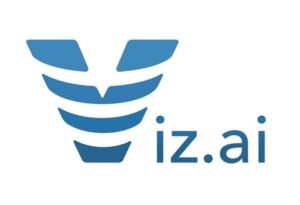 Viz.ai has further advanced the field of stroke imaging and workflow by developing a novel method for the detection of signs of large vessel occlusion (LVO) stroke in non-contrast CT head scans (NCCT). Researchers from Emory University who independently assessed the new technology, will present a research study comparing the algorithm’s read of a NCCT with CT angiogram-based ground truth at the Society of Vascular and Interventional Neurology (SVIN) 2018 Annual Meeting.
Viz.ai has further advanced the field of stroke imaging and workflow by developing a novel method for the detection of signs of large vessel occlusion (LVO) stroke in non-contrast CT head scans (NCCT). Researchers from Emory University who independently assessed the new technology, will present a research study comparing the algorithm’s read of a NCCT with CT angiogram-based ground truth at the Society of Vascular and Interventional Neurology (SVIN) 2018 Annual Meeting.
Neuroimaging has expanded beyond its traditional diagnostic role and has become a critical tool in the evaluation and management of stroke. The objectives of imaging include prompt accurate diagnosis, treatment triage, prognosis prediction, and secondary preventative precautions. While capitalising on the latest treatment options and expanding upon the “time is brain” doctrine, the ultimate goal of Viz.ai is to maximise the number of treated patients, minimise the time to treatment and improve the outcome of patients suffering stroke, one the most costly and morbid diseases.
“Earlier detection and notification of suspected LVO stroke patients using a regular CT scan will open up the opportunities for treatment,” said Raul Nogueira, professor of neurology at Emory University and director of Grady’s Neuroendovascular Service. “This ground-breaking research further demonstrates the opportunities that artificial intelligence can offer in helping physicians make fast stroke triage decisions thereby broadening patient access to life-changing therapies.”
Non-contrast computed tomography (NCCT) is the ubiquitous first imaging study for patients with suspected stroke. Signs like the Hyperdense Vessel Sign (HDVS) are one of the earliest identifiable findings in patients with acute ischemic stroke. Recognition of specific signs in the NCCT can aid the earlier diagnosis of large vessel occlusions (LVOs) and faster triage to endovascular reperfusion.
“Viz.ai is committed to developing novel technology to assist physicians in making faster decisions, and speed access to life saving treatment,” said Chris Mansi, neurosurgeon and CEO of Viz.ai. “AI based NCCT analysis has shown great potential in detecting potential LVO stroke patients earlier and could create a new paradigm of proactive stroke workflow based on the most commonly available imaging modality.”










